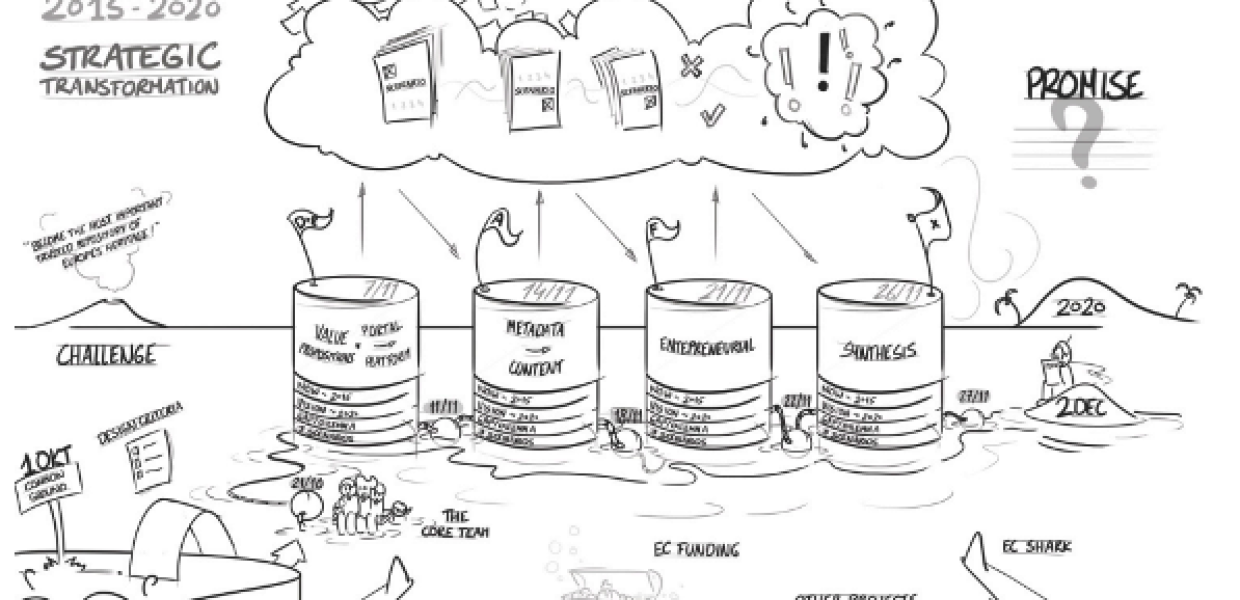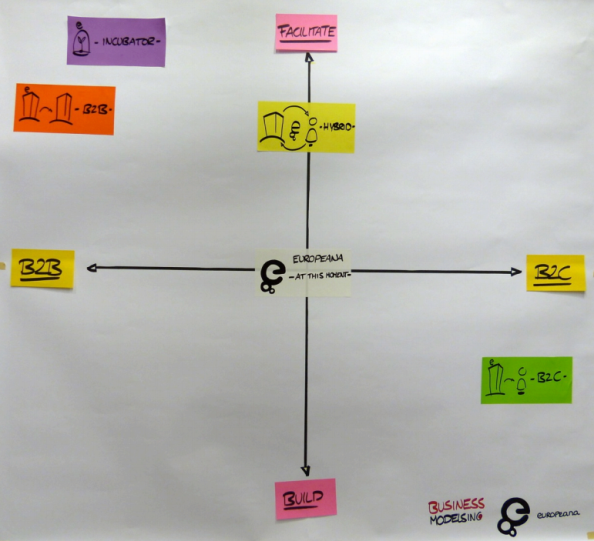Who should Europeana be serving in 2020? And how?

Blog by Wiebe de Jager, Europeana Marketing Manager.
‘The best way to predict the future is to invent it’, said Alan Kay in 1971. We agree and so we’re running four workshops to help define Europeana’s strategy for the period 2015-2020. Rather than passively reacting to the changing environment we’re all in, we want to proactively discuss and shape the future with our most important stakeholders.
We’ll try to define where Europeana is right now, where we will be in 2020, and how we get there from the present. There is no single right answer or route, so we’ll come up with different scenarios that bring together the various value chains, content strategies and business goals.
The outcomes of the workshops – one for Distribution & Engagement, one for Aggregation, one for Facilitation, and a finalizing Synthesis session – should provide us with a shared vision for Europeana in 2020, something on which we can base the Europeana 2015-2010 Strategic Plan.

Illustration by Business Models, Inc.
First workshop: Distribution and Engagement – 7 November
We started by asking participants to define Europeana’s strengths and weaknesses, and there was plenty of positive things to say: the Network has grown quite strong over the past few years; we’ve seen great results in setting standards for open data and licences for re-use; and the original vision behind Europeana – to get all of Europe’s cultural heritage online – still appeals to many people.
But there are weaknesses too. Europeana’s brand recognition is quite low. The foundation suffers from a lack of focus, the quality of our data – our core product – is not always high. And the way Europeana is funded – mostly by projects – makes it difficult to initiate long-term change.

Illustration by Business Models, Inc.
What are ‘distribution’ and ‘engagement’ anyway?
To talk about distribution and engagement in a meaningful way, we all need to use the terms the same way. Participants were asked to write down what to distribute means to them in the Europeana context. Responses included ‘Getting stuff out’, ‘Enabling re-use for large and diverse audiences’, and the broader ‘Access to heritage for all’.
Regarding engagement, comments focused around what should happen once content is available: ‘make people click, share and comment on stuff’, ‘empower creative professionals’, ‘create the circumstances for meaningful audience involvement’ or simply ‘community’ and ‘participation’.
Vision for Europeana 2020
Participants were then asked to create their own magazine for Europeana in 2020. What would be the cover story? And the big headlines? What would you read in the ‘financial’ and ‘interviews’ sections of the magazine?
This assignment really unleashed our creative potential. We saw headlines like ‘Europeana as a money maker for startups!’ ‘Access to global digital heritage through 4-dimensional APIs and augmented reality!’ ‘A unified Europe, thanks to Europeana!’ ‘A new ‘Europeana’ channel from Discovery!’ ‘Europeana providing cultural content to game developers!’ ‘The first really personal EUseum!’ ‘We opened up our content, and no one died!’ ‘Millions of volunteers, and a stable income from crowdfunding!’
Four scenarios for the future
With 2020 in mind, next we came up with four business models that might work for Europeana: business to business (B2B), business to consumer (B2C), Europeana as an incubator, and a hybrid model. For each model, we highlighted the main value propositions, key activities, key partners, customer segments, customer relationships and channels, along with financials such as costs, resources and revenue streams.
In the incubator and B2B business models, Europeana would become a platform for other parties to build applications and websites on, and in the case of the incubator provide those external business with the necessary content, tools and funding. Revenue streams might come from licensing deals, affiliate marketing or pay per use. However, creating a strong brand was considered more difficult in these models, and Network partners might not like the idea of Europeana making money from content deals.
The B2C model is the only one in which Europeana focuses only on end users, providing them with the portal and with apps and dedicated websites. In the hybrid model, Europeana would still serve end-users, but would also cater to the needs of other businesses or institutions, for example by providing a well-documented API as well as some inspiring examples of what can be done with Europeana’s content and tools.
We then went on to define the unique selling points and gaps that might help or hinder Europeana. The business models were positioned on a quadrant with one axis representing the ‘businesses’ or ‘customers’ continuum, and the other representing ‘building’ and ‘facilitating’:

Image by Business Models, Inc.
Concluding remarks
Do we have the answer to where Europeana is heading? Not yet. No decisions were made and we weren’t asked to indicate which business model appealed most or seemed most realistic, and of course, we still have three workshops to come.
But it’s interesting to see that three out of the four business models discussed focus more on ‘facilitation’ and ‘B2B’ than we do right now. Today, Europeana sits in the middle of the quadrant. So perhaps a move to more facilitation could be the direction we’ll need to take in the years to come.
See more pictures from this workshop and find out more about our strategy workshop series on our new Strategy Engine Room page.
